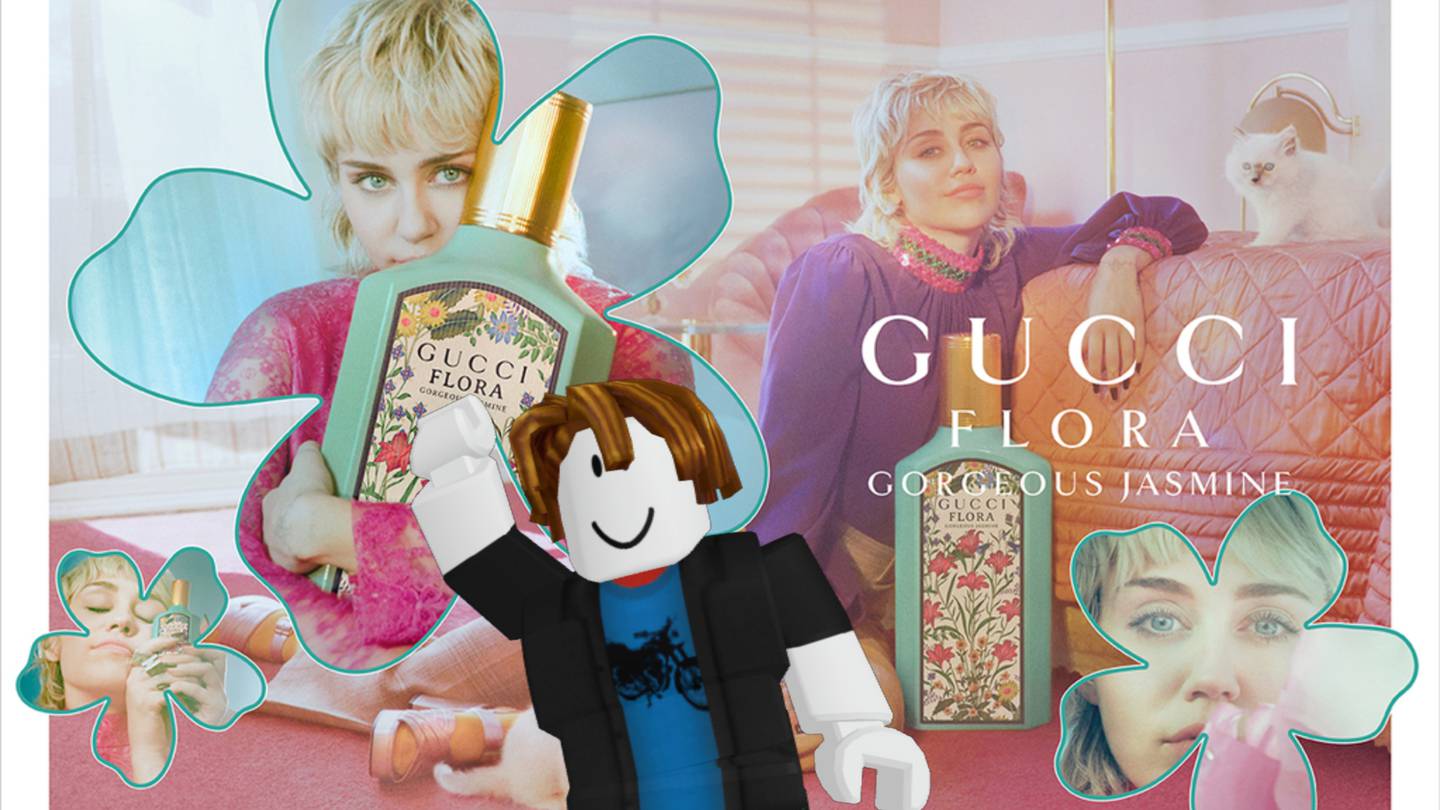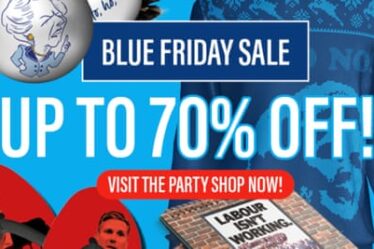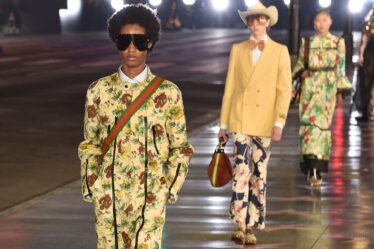
At the same time that a rain-soaked crowd of A-listers watched Tommy Hilfiger make a return to New York Fashion Week on the Brooklyn waterfront on Sunday, the brand streamed the show live in a drier, virtual version of the city.
That New York was in Roblox, the online gaming platform popular among tweens and teens now averaging more than 50 million users daily. Tommy Hilfiger opened an experience set in the virtual metropolis in June, where visitors can bike across Brooklyn rooftops, parkour their way around graffiti-covered buildings in The Bronx or fly between them in Manhattan wearing a wingsuit. Naturally, they can also buy digital Tommy Hilfiger items like bucket hats or hoodies. Anyone playing in the space right now can still see a replay of the NYFW broadcast, as well as digital avatars strutting through the city wearing the new collection.
The event is just the latest example of how fashion is courting Roblox’s users. Since last year, when companies such as Vans and Nike began launching their own spaces on the platform, activity has only increased. Forever 21, Alo Yoga, PacSun and Puma have all established a presence. Even luxury players are getting involved. Gucci debuted its first permanent world in May, a year after trialling a two-week experience on the platform. In July, Burberry released a collection of digital handbags, and this week, Dundas partnered with DressX on a set of Roblox wearables.
Many brands see Roblox almost like another social media channel, according to Charles Hambro, co-founder and chief executive of Geeiq, a gaming data and strategy firm whose clients include Tommy Hilfiger and Gucci. Users are often there to socialise as much as play games, and they’re doing so in an interactive space, which brings its own advantages.
“It’s really about building a relationship with this audience that’s deeper than just scrolling through a social media feed,” Hambro said.
Selling digital goods is one opportunity for brands, though perhaps not the biggest one. Burberry earned an estimated $40,000 from its July drop after giving Roblox its cut, according to Geeiq. For a company that generated £2.8 billion ($3.5 billion) in its recent fiscal year, it’s not a huge amount.
But brands also see a chance to connect with a large, engaged audience on a platform that is arguably the closest approximation we have to a functioning metaverse. New changes are only making it more attractive, including a shift to older users, the introduction of new immersive ads and Roblox’s continuing efforts to offer more realistic clothes.
Roblox talked about these developments in its August earnings update and at an annual developers’ conference this week. Roblox will begin offering voice chat, for example, where previously users could only talk to one another through a text chat.
The company also said it reached a milestone: users 13 and older now make up the majority after years of younger players being its biggest audience. Its “fastest growing demographic, across both male and female users, was 17-24 year olds,” it noted in a shareholder letter. Roblox believes “more aged up content” is partly responsible, and it’s instituting new guidelines to designate games as being appropriate for different age groups, according to The Verge.
These older users are more likely to be aware of fashion and have more ability to spend on it than younger shoppers, creating an audience that’s even more appealing to fashion brands. Roblox is also rolling out new ways for brands to get in front of them. In the past, ads on the platform were limited to crude banners trying to convince users to visit other experiences. Now brands will be able to insert ads that feel native to the environment, like having a large billboard on top of a stadium.
They’ll also have the chance to drop portals to their worlds in other experiences, as CEO Dave Baszucki described on the company’s recent earnings call.
“Imagine we are at one of our most popular Roblox experiences,” he said. “Imagine a AAA partner had a small pop-up in the town square and players will be able to choose whether to stop by, use that pop-up or portal or door — you name it — to jump over to one of our brand experiences, experience something new, pick up some free merchandise and pop back to the experience that they’re playing.”
Baszucki added that the company has people “working with the Guccis and the Tommy Hilfigers” on this form of advertising.
Roblox seems eager to add some new sources of income. While its revenue continues to grow, its bookings per daily active user — a measure of how much it is making across its audience — slumped after surging during the height of the pandemic.
Though brands like Burberry might not be making huge sums from digital goods on Roblox just yet, Hambro pointed out that the cost to produce such products is low compared to making real-world items. A small investment that provides a positive return can still be one worth making. (Hambro did add, however, that he believes Roblox could provide a real revenue opportunity in the long term.)
Roblox is doing what it can to make digital goods more desirable, too. In April it launched what it calls “layered clothing,” finally allowing users to mix and match a number of digital wearables. A user can now buy a Burberry bag and wear it with a Nike top, a Gucci hat and Tommy Hilfiger jeans, for instance. And the items fit any avatar, “from a Classic Blocky all the way to a T-Rex,” the company said. The update lays the foundation for future advances as well, such as user-generated bodies.
Still, the real prize for fashion brands on Roblox at the moment may just be starting a relationship with the next generation of shoppers as they grow up spending time in 3D spaces online. Of course, some brands’ experiences are more successful than others.
The daughter of one BoF employee who tested a few of the spaces gave a positive review of Tommy Hilfiger’s but was less impressed by Gucci’s. Though at age 7, she’s probably younger than Gucci’s target audience, even on Roblox.



